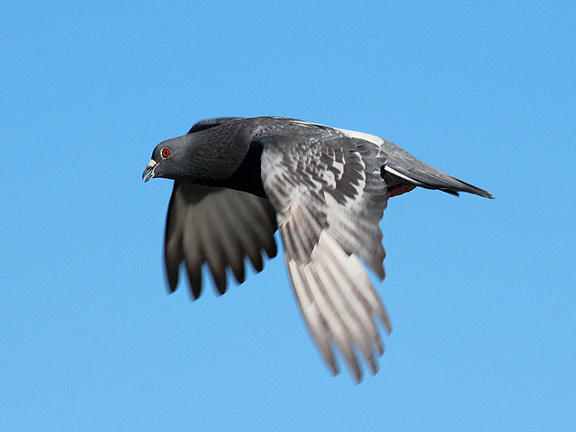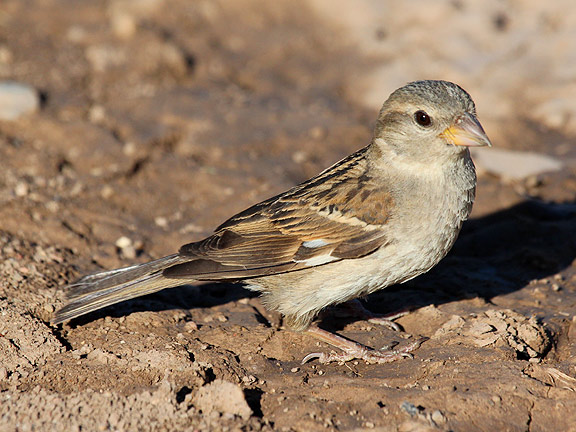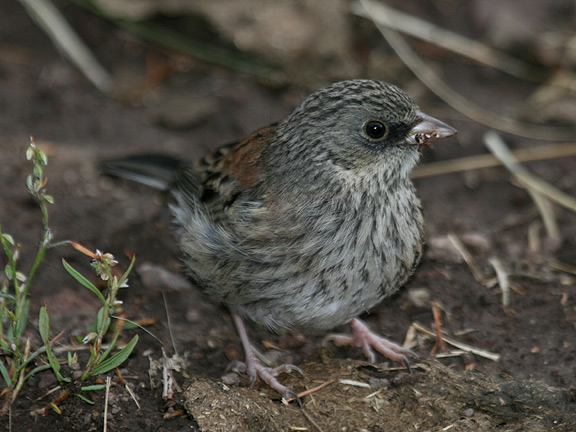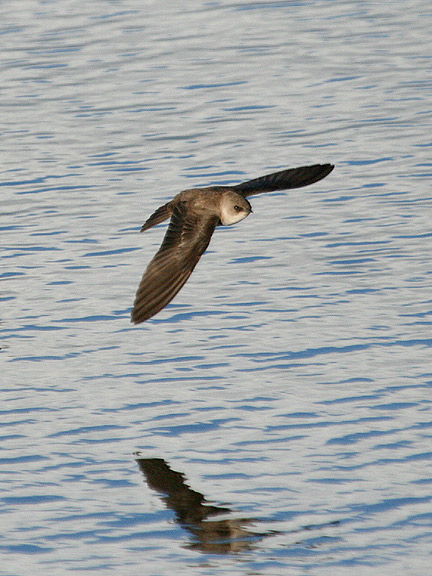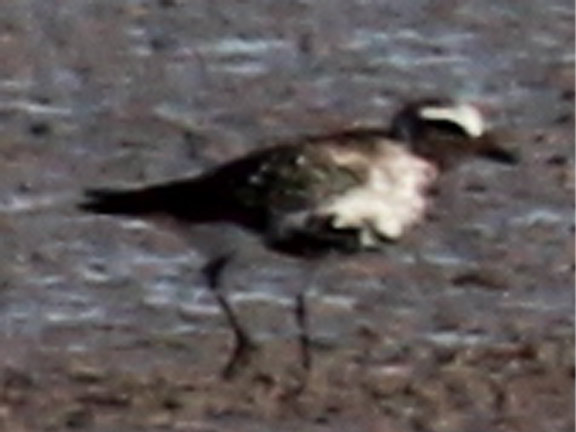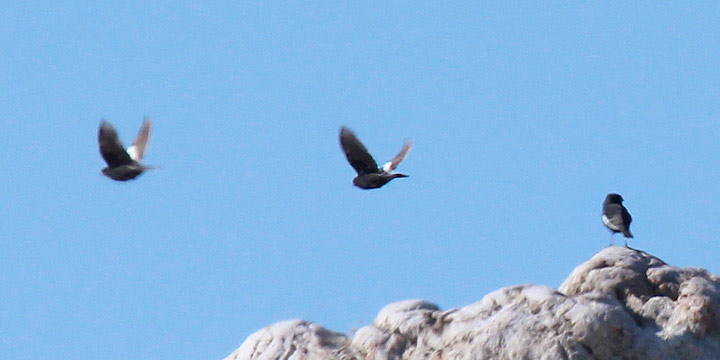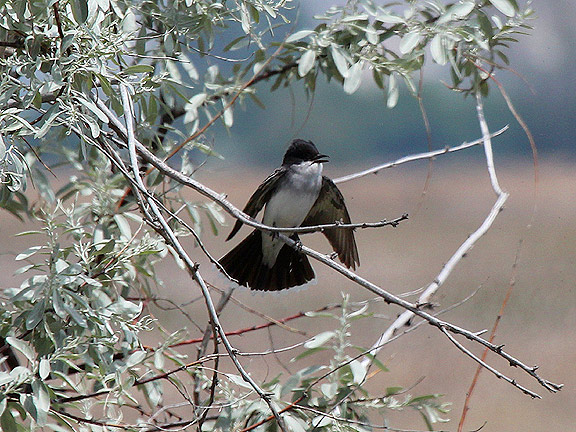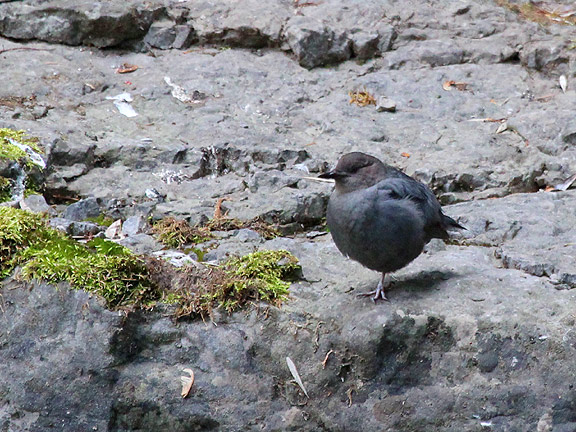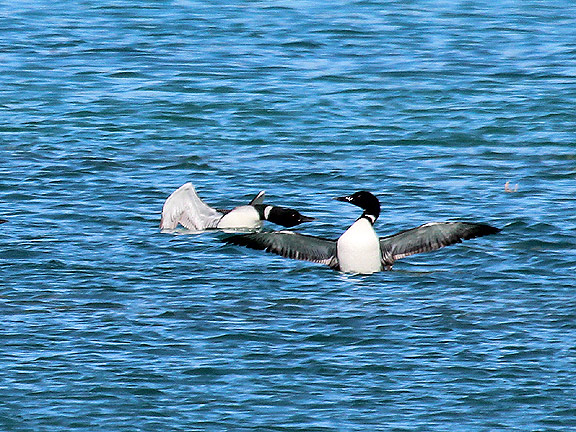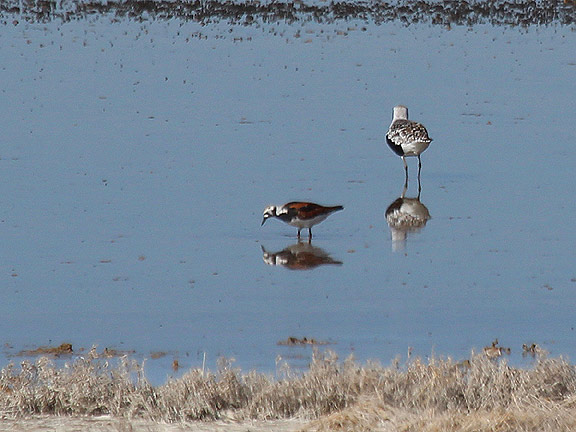It seemed like we just finished our big day when Jeff and I were back at it again with the Marathon Birding Trip for the Great Salt Lake Bird Festival on Sunday May 20th. Take away a few miles, and a couple hours, throw in 14 other people, and you've got yourself a logistics nightmare trying to get 14 eyes on every bird. Add in a car breaking down, and an eclipse that darkened the skies 2 hours early and the odds were not in our favor. Yet, everything turned out alright in the end. In fact some how despite falling behind schedule almost from the start we ended up with our 2nd biggest Marathon total to date--
only 6 short of a new record with 136 species recorded. And something this year that really stood out wasn't just the number of species, but the quality of some of those species we got. As usual some of the misses make me cringe just thinking about them--and
how 150 species should have been a cinch!
But that's neither here nor there so lets talk about the trip. Just after 6:00am we rolled out of Farmington with 3 mini vans, 2 guides, 3 drivers, 10 participants, and special guest Greg Miller (The Big Year). Greg was a fun guy to go birding with and provided a ton of interesting information, plenty of funny comments, and made the experience memorable for everyone. Our first stop was the ponds at the end of Glover Lane which were pretty dead in comparison to past year--very few waterfowl and shorebirds. Plenty of
FORSTER'S TERNS provided great looks for all. We made our way into Farmington Bay where right inside the entrance we snagged a couple of great birds for the day. A drake
BLUE-WINGED TEAL and a
SPOTTED SANDPIPER accompanied the various other waterfowl and shorebirds. Both
SNOWY and GREAT EGRET were picked up along the road to Egg Island. At the raised parking area we got stellar looks at a
WHIMBREL, a number of Long-billed Curlews, and
1 MARBLED GODWIT in the grass to the west. A lone
BLACK-BELLIED PLOVER, and a handful of Dowitchers were in the distance.
Common Yellowthroat at Antelope Island Causeway
Anyways, we left Farmington and headed to Antelope Island picking up
AMERICAN CROW on Antelope Drive. At the entrance station to the park a
COMMON YELLOWTHROAT was in the bushes just singin' away. On the causeway was a shorebirders delight.
Plovers, sandpipers, sanderlings, curlews, willets, whimbrel, phalarope, killdeer, knots, turnstones--
it was a Thanksgiving Dinner and there was something for everyone to eat. We started getting the easy stuff then the really good stuff, then the okay stuff. People were getting new Utah birds, new life birds, and new year birds. After a while I got down to business and started scoping the plovers--around
1,200 BLACK-BELLIED PLOVERS were there and mixed in were a few treats. I found an
AMERICAN GOLDEN-PLOVER still in basic plumage and everyone got great looks. Then it was about 30 minutes of checking bird by bird looking for a reported
PACIFIC GOLDEN-PLOVER from the previous day. GOT IT! Feeding on a mudflat about 150 yards out with a handful of Black-bellied. The bird was still molting and seemed to have all the right features. Front heavy, long slender bill, short primaries, thick white patch on the neck, and a beautiful golden back.
Possible Pacific Golden-Plover
at the Antelope Island Causeway
After having spent way too long on the causeway, we headed towards the island. On the way we picked up another
GREAT EGRET--funny to see one sitting along the edge of the briney water. As we entered the island we added a surprise
LARK BUNTING--an exceptional new day bird. Everyone got to see the bird before it disappeared over the hill and we moved on. We snagged the island regulars on the loop to the corrals and back before hitting the road north to Willard Bay.
Lark Bunting at Antelope Island
At Willard the
GRAY CATBIRDS were out in force as well as the orioles, Yellow Warblers, Western Kingbirds, and grosbeaks. Surprising was that we had ZERO empids here. As we went to leave the van Jeff was riding in wouldn't start. After a few minutes they got it started and we decided to head to the Flying J in Willard to decide what to do. We found out we could get another vehicle delivered but it would be 45 minutes. We took a break, had lunch then got everyone back in the cars and headed to Bear River Road. The broken van made it up there, but not before they got the check engine light. We drove a short ways out the road just enough to find
4 EASTERN KINGBIRDS along the fence line. As we headed back towards the freeway the backup car arrived and we switched out vehicles--then headed towards Cache County.
Eastern Kingbird at Bear River MBR
A quick stop at Mantua didn't turn up anything new for the day except a
TREE SWALLOW. We skipped ALL of our usual Cache Valley stops to try and catch up on lost time--plus the potential for new birds was limited. Our next stop was along the Logan River to scan the cliffs for swifts. We managed to pick up
VIOLET-GREEN SWALLOW--which were flying over the ridges in the hundreds. Greg spotted a
WHITE-THROATED SWIFT amongst the throngs, while a couple high flying birds that looked to be swifts were just specks in the distance. We also managed to see our only
WESTERN TANAGER of the day here--as well as a singing
FOX SPARROW, and
LAZULI BUNTING. At a second stop we added
AMERICAN DIPPER but nothing else. Next we decided to try something different. In the past the road to Tony Grove has always been closed for this trip--this year it was open. The long drive in and out takes a lot of time, but we added a bunch of species, including a couple birds we haven't had on the trip before. Most notably were a pair of
WHITE-WINGED CROSSBILL that were foraging on the side of the road, and a
HAMMOND'S FLYCATCHER in the same area.
American Dipper in Logan Canyon
We picked up most of our high mountain species here, and what we didn't get on the road, we tracked down at Franklin Basin Road. Big misses were all the mountain woodpeckers minus Flicker. No sapsuckers, no Hairy, and no Three-toed--and we didn't get any of them later. In fact the only woodpecker we got all day was
NORTHERN FLICKER. We skipped Beaver Mountain then cruised out of the high country to Bear Lake where we picked up
COMMON LOON on the southwest shore. This was a first for this trip route. It was fun to watch the loons chase and harass one another on the vibrant blue water. Heading east towards the Wyoming border hoping to pick up some raptors we were missing on a portion of the route that normally produces. It didn't let down as we added
GOLDEN EAGLE and PRAIRIE FALCON along the way.
Common Loon at Bear Lake
Continuing to adjust our route, we skipped out on the majority of the Deseret Ranch Lowlands and instead only drove the first couple miles of Home Ranch Road where we added
AMERICAN WIGEON and VESPER SPARROW. Several
WILSON'S PHALAROPE provided great looks just off the road which allowed for a nice photo opportunity.
Jumping the border we made our way to Woodruff Narrows Reservoir in Wyoming and added
RING-NECKED DUCK on the water,
NORTHERN ROUGH-WINGED and BANK SWALLOWS rounding out the swallows for the trip, and
BREWER'S SPARROW which had been scant throughout earlier stops. As we were leaving the last car with Jeff spotted
3 GREATER SAGE-GROUSE just off the road. We were a 1/4 mile up the road and had to flip a u-turn to get back. Our car saw the birds as they disappeared over the hill, and the 3rd car barely got looks--far from satisfying. But all as not lost--as we turned to leave Mike spotted another grouse further up the road. We saw one and it disappeared into the sage--so I walked with Greg out to see if he could get a photo. Little did we know that one bird was with 5 others that waited till we were right on top of them before taking flight. This time everyone saw the birds as they circled and dropped deeper into the sage flat.
By now we were more than 2 hours behind schedule and rolled into Evanston around 7:00pm. We took a quick dinner break as the sky started to dim as the sun and moon met in the sky to the west.
"The Eclipse" - Lens Flare
We had to chop out a couple of huge stops that could add 5 to 10 more species just to make it back into the mountains to try for a few more birds we needed. We raced down I-80 towards Echo then cut over to Henefer and up East Canyon above the reservoir. At Jeremy Ranch Road we missed Swainson;s Thrush, it may just be a tad early--but further up the canyon we added HERMIT THRUSH before dark. A staked out RUFFED GROUSE site had been disturbed by people placing a power generator and gas can 5 feet away form the log the bird was using. The grouse was there but left the log when I went to see if it was there. Several in the group did get to hear it drum before it wandered off. Unfortunately, I imagine this site will probably end up failing due to the generator and people in the area.
Ruffed Grouse in East Canyon
As darkness settled a breeze picked up and the forest grew quiet--Jeff and I both heard a
FLAMMULATED OWL hooting but it quickly faded. As we tried for the birds after we had no responses. Jeff wandered down the road a few hundred feet and found another owl so the group followed--by the time we got there, silence. And for 15-20 minutes nothing--well nothing but cars. It became frustrating--but even more so when an Owl out of nowhere would start hooting right as the cars were coming, then stop when the cars were gone. I was beginning to worry that we would miss looks at this tiny owl that was always a special end to the trip. Then as a car headed up the road and one of the tiny birds started to hoot again I headed towards the sound. The bird sounded close, and the car passed giving me a clear direction to the bird. I didn't hesitate, putting my flashlight on what seemed like too small a tree for any owl, but as I scanned up the trunk of the tiny tree, there on the tiny limb was the tiny owl. Everyone came towards me getting looks at the owl before the bird finally sick of the attention retreated into the woods.
For a number of attendees this was a highlight and a life bird. For Greg Miller it was a visual lifer, one of very few birds of North America he had heard--but not seen. Impressive for someone with a life list approaching 800. While we were trying for the owl at one point Jeff called out a
COMMON POORWILL but no one else heard it. About 5 minutes later I heard the bird, but then it went quiet again. And that's it.
We made another stop to try for Saw-whet and/or Pygmy-Owl, but nothing responded to my persistent whistling. We headed back towards Salt Lake, then Farmington getting everyone back around 11pm. 17 hours, 136 species, and more than 300 miles later, another Marathon Birding Trip was over. At the end of these days it is always crazy to look back and see what you missed.
It's crazy for instance to think that we saw RUDDY TURNSTONES, but not Ruddy Ducks. Or that we saw WHITE-WINGED CROSSBILLS, but not Red Crossbills. Or how about the fact we had TWO species of GOLDEN-PLOVERS, but not a single Snowy or Semipalmated Plover.
Ruddy Turnstone at the Antelope Island Causeway
We had no Scrub or Steller's Jay, no wodpeckers besides flicker, no empids besides Hammond's, and not a single Black-chinned Hummingbird. This year might have had the most surprise misses. Over the past 5 years the thing that has seemed consistent was a later than normal spring--this year we were weeks ahead and in the past where birds were clumped together in the mountains in search of food, now they were spread out on territories.
It made for an interesting time--but as always a great marathon trip!
On the drive home Jeff and I talked about the trip and the biggest dislike we have is the amount of driving time between stops. Too much time is spent in the car trying to get to new patches of habitat to pick up 2 or 3 birds to keep building the number up--so next year we might switch things up a little and change the route to allow more time for birding--and maybe even more birds. I guess we will have to wait another year to find out!Labels: big day, field trip, great salt lake, great salt lake bird festival, listing, rare birds, shorebirds
